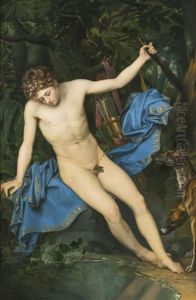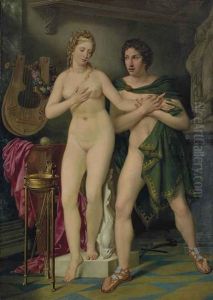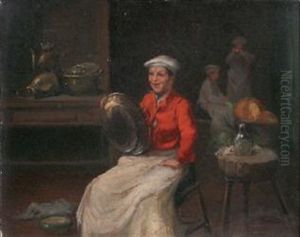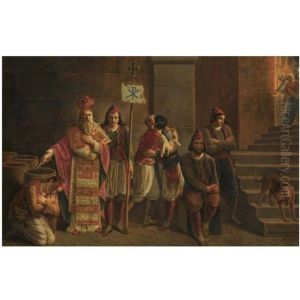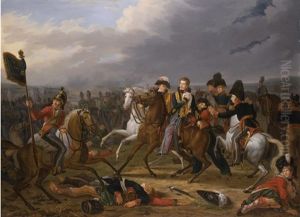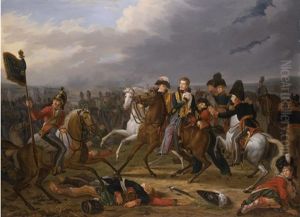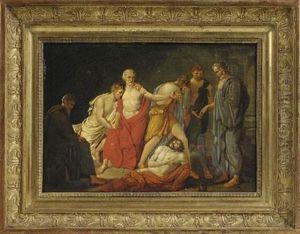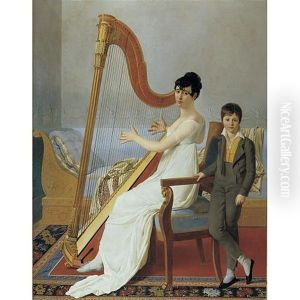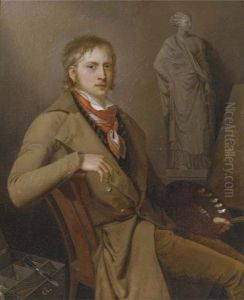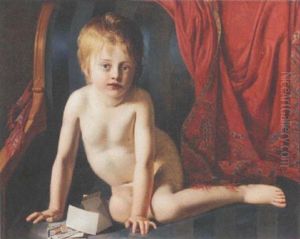Joseph Dionysius Odevaere Paintings
Joseph Dionysius Odevaere was a notable figure in the world of 19th-century European art. Born on 12 February 1775 in Bruges, located in the Austrian Netherlands (present-day Belgium), Odevaere showed an early aptitude for the arts that would shape his career and contributions to the Neoclassical movement. His artistic journey began under the guidance of local teachers before he ventured to Paris and then to Italy, where he furthered his studies and immersed himself in the classical traditions that deeply influenced his work.
Odevaere's time in Italy, particularly in Rome, was transformative. There, he became a part of the vibrant community of artists and intellectuals, drawing inspiration from the masterpieces of antiquity and the Renaissance. His style evolved, characterized by a meticulous attention to detail, a harmonious use of color, and a focus on historical and mythological themes that were central to Neoclassical art. One of his most celebrated works from this period is 'Lord Byron on His Deathbed,' painted in 1826, which is often noted for its emotional depth and the skillful portrayal of the famed poet.
After achieving success in Italy, Odevaere returned to the Low Countries, where he continued to work and receive commissions. His reputation as a skilled painter and his contributions to the arts were recognized by his appointment as a court painter. Throughout his career, Odevaere was involved in the artistic circles of his time, contributing not only through his paintings but also through his role in the development of art institutions and societies which supported the arts.
Joseph Dionysius Odevaere passed away on 26 January 1830 in Bruges. His legacy is preserved in the collections of various European museums, where his works continue to be studied and admired for their craftsmanship and elegance. Odevaere’s career reflects the broader transitions within European art from the late 18th to the early 19th century, embodying the shift towards Neoclassicism and its ideals.

